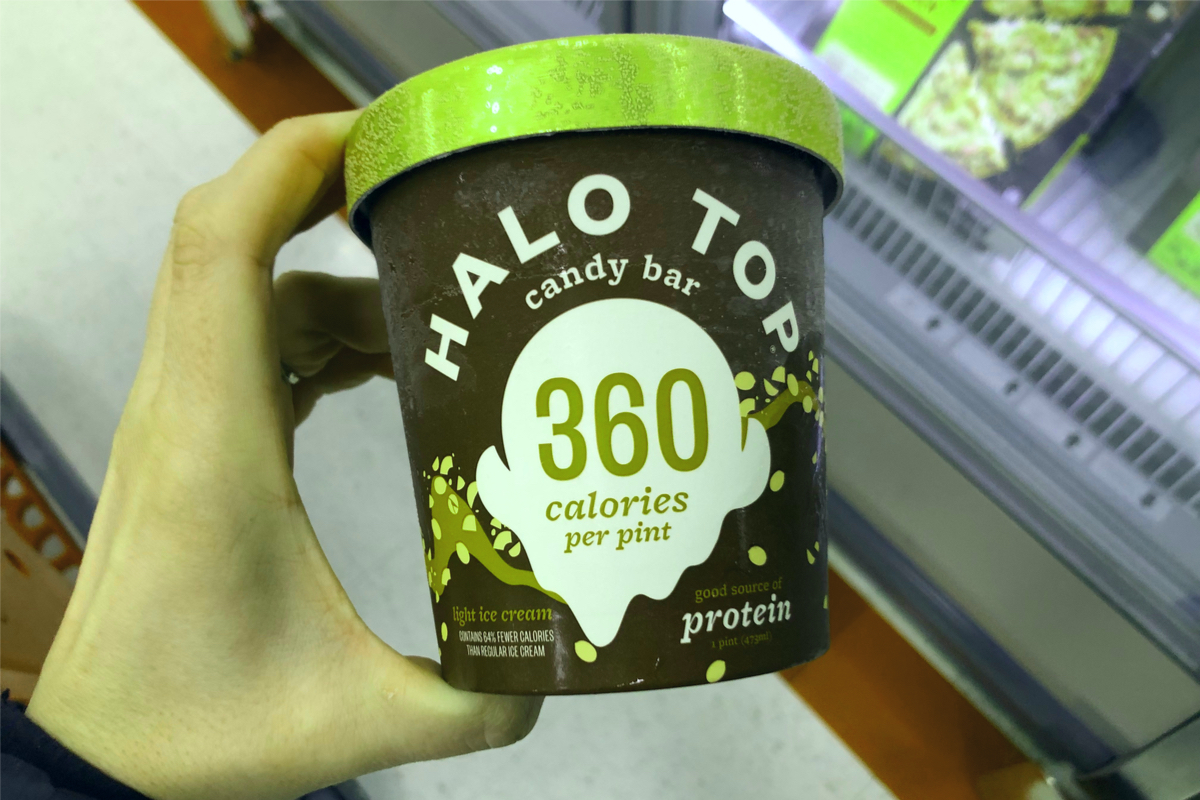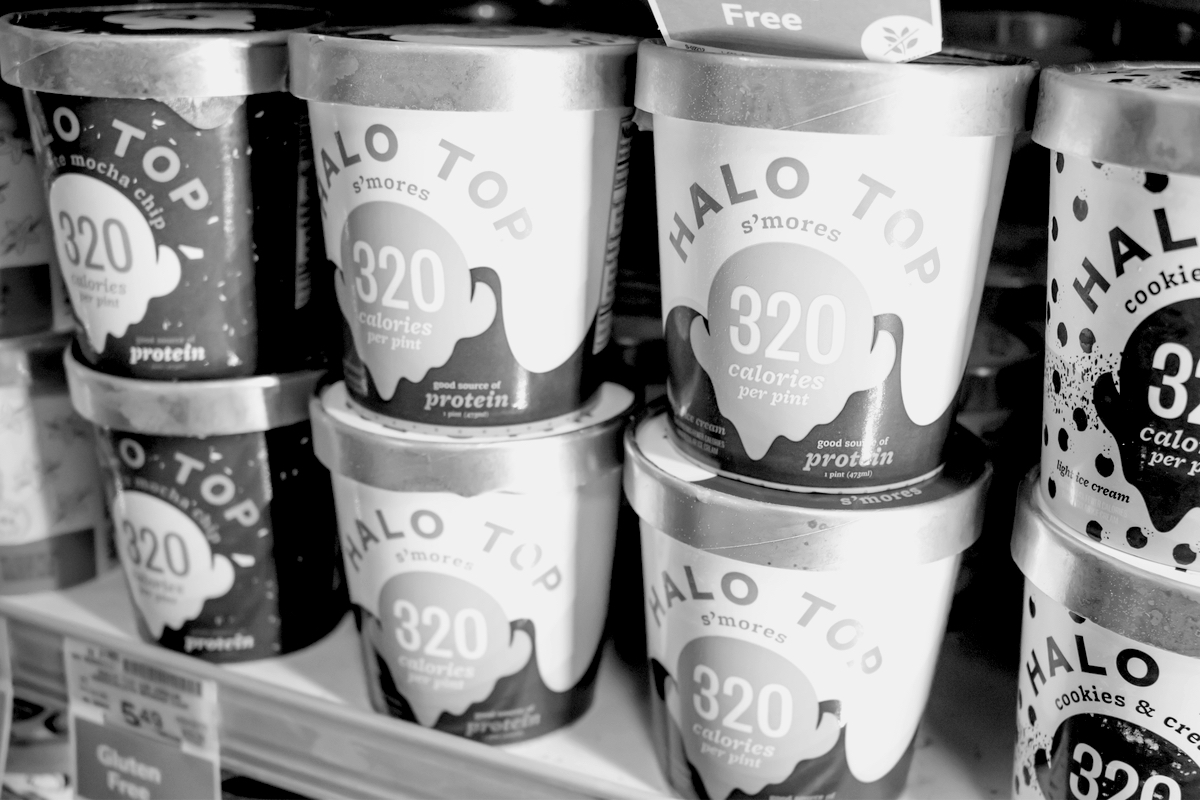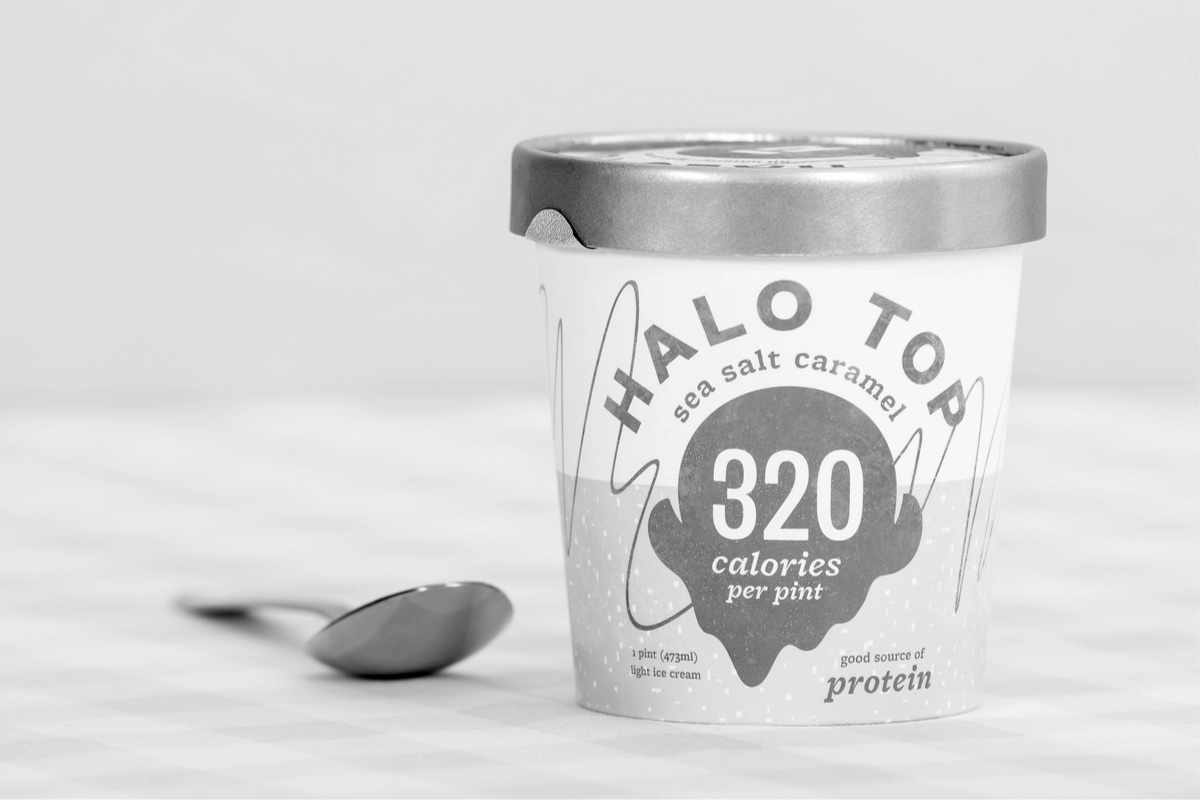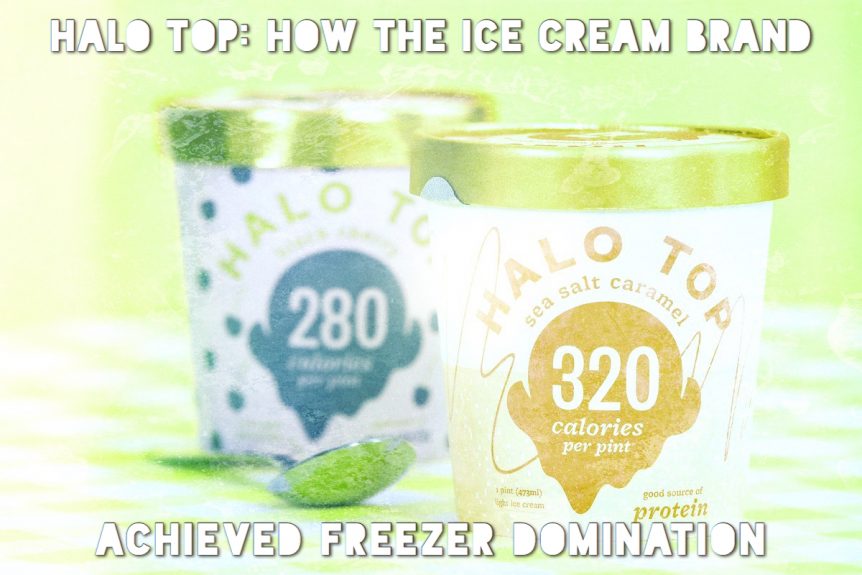Halo Top is not your ordinary ice cream. It’s a low-sugar ice cream created in a kitchen and now found on store shelves around the world.
Launched in 2011, Halo Top became an overnight sensation in 2016 and sold to Wells Enterprises in 2019 for an undisclosed sum. Insiders predict the deal was potentially worth close to $2 billion.
The man behind the wildly successful ice cream is Justin Woolverton. Woolverton was a corporate lawyer by trade, which came in handy as he built his ice cream empire. The company has faced a few legal hurdles, including a lawsuit from a New Jersey Dairy Farm and a class-action lawsuit from an unsatisfied customer.
Despite some hiccups, Woolverton and his company have persevered. So, how did Woolverton go from mixing ingredients in his kitchen to selling millions of dollars’ worth of ice cream? Let’s take a closer look at his story..

Who Is Justin Woolverton?
As with a wide range of successful entrepreneurs over the past decade, Justin Woolverton didn’t have direct industry experience. He wasn’t part of the dairy industry, but he was an ice cream connoisseur.
The story starts in 2011 with Woolverton working at the LA law firm Latham & Watkins. Woolverton had no plans to launch a company. He just wanted to eat a pint of ice cream without feeling guilty.
Tired of the bland low-sugar ice creams in the grocery stores, Woolverton started experimenting with his own homemade desserts. He’d mix bowls of Greek yogurt with fruit and then add stevia to sweeten the treat.
He eventually splurged and bought a $20 ice cream maker. Happy with his creation, Woolverton had a moment of clarity. He remembers realizing that other people might enjoy his new ice cream as well.
So, he decided to try bringing his recipe to consumers. But first, he had to fine tune his recipe.
Making the Perfect Ice Cream Requires Trial and Error
Justin Woolverton isn’t a scientist and doesn’t have a background in the food industry. So, how did he make great-tasting low-sugar ice cream? He tried and tried until he got it right.
Woolverton spent the next 18 months trying and tasting various combinations of ingredients.
A turning point came when Woolverton visited the Dairy Innovation Institute at Cal Poly San Luis Obispo. He worked with experts to improve his product.
Before going to the dairy institute, the original Halo Top ice cream wasn’t resilient enough for shipping to stores around the country. The researchers helped refine the formula, but it was now too thick.
Ice cream manufacturers tried to tell Woolverton that his formula wouldn’t run through ice cream production pipes. He ignored their advice and found an ice cream maker that would try his recipe. The thick formula started passing through aluminum production pipes and quickly jammed the machinery. Bolts flew across the room.
Woolverton made a few more changes to his recipe and tried again. In the end, he relied on the expertise of leaders in the field and it paid off. What started as a kitchen recipe was now a carefully developed formula and ready for the market.

How the Halo Top Founder Almost Died for the Company He Built
Along with struggling to select the right combo of ingredients, Woolverton experienced a few other obstacles, including almost dying.
Justin Woolverton had a scary experience while delivering Halo Top ice cream. Before the company took off, he would personally drive samples of his ice cream to sites around LA.
Woolverton packed the back seat of his car with ice cream samples stored in dry ice. The dry ice helps to keep the ice cream from melting. However, as the dry ice evaporates, it releases carbon dioxide.
While stuck in a traffic jam, Woolverton had trouble breathing. He was soon hyperventilating and close to fainting. Luckily, an ambulance was also stuck in traffic. He managed to flag the paramedics down as he stumbled from the car.
Choosing the Right Name Is Often a Challenge
Recipes and dry ice are just the beginning of Woolverton’s challenges. He also had to choose a name for the brand.
Most business stories include an interesting anecdote about how the founders came up with the name. Woolverton’s story includes a name change and a lawsuit related to the new name.
Woolverton originally called his company “Eden Creamery.” After about a year of business operations, he decided to change it.
He felt that there were too many companies using “Eden” in their names and wanted to avoid any future lawsuits. So, he chose “Halo Top.” Ironically, the new name led to a lawsuit, which is what he was trying to prevent.
Halo Farm, a dairy farm in New Jersey, sued Halo Top in 2017. The farm sells ice cream and dairy products in stores throughout New Jersey. Halo Farm didn’t want its customers to confuse its products with Halo Top’s ice cream, as Woolverton’s ice cream includes stevia and erythritol as sugar substitutes.
The lawsuit was eventually settled and Woolverton continued to use “Halo Top.”
Finding a Partner in Crime on the Basketball Court
Woolverton knew that he needed help with his fledgling company, so he got another lawyer involved.
Woolverton met Doug Bouton through an amateur basketball league. The two got along on the court and soon became partners in Halo Top.
Justin Woolverton retained the CEO position while Doug Bouton became the president and chief operations officer (COO) for Halo Top.
Doug also brought along his brother Ryan, a former actor, to handle social media marketing. The team was now assembled. The product was ready.

Getting Halo Top Onto Grocery Store Shelves
Justin Woolverton had spent a couple of years trying to get his ice cream company up and running. He still needed to get his product to consumers.
At first, Woolverton found it difficult to find stores that were willing to carry his ice cream. After dozens of cold calls, he managed to get space on the shelves of a few stores, including Whole Foods.
The hands-on approach is something that never changed. After the company became a success, Woolverton continued to keep his operations small.
By 2017, Halo Top had just 50 employees and most of them worked remotely. The company operates out of a co-working space in a low-rent area of LA’s Fairfax District. Woolverton and Bouton don’t have their own offices, as they often work from the road or home.
Most of the staff meetings occur virtually, using software such as Slack. The company also relies on third-party companies to manufacture and distribute the ice cream, limiting the scope of their operations.
Woolverton Can Thank a GQ Writer for Brand Awareness
When did Halo Top break it big? January 2016. That’s when the brand was featured in a GQ article, helping to dramatically increase Halo Top’s profile.
A GQ writer tried eating nothing but Halo Top ice cream for 10 days. The article quickly went viral, bringing lots of attention to the small ice cream company.
Thanks to the initial publicity, the company increased its sales by 2,500% in 2016 compared to 2015.
Using the good PR created by the GQ article, the team at Halo Top capitalized on its new-found fame with a strong social media presence. Ryan Bouton, Doug’s brother, spearheaded the social media marketing, gaining over 500,000 followers on Instagram.
By the end of the summer of 2017, Halo Top had become the best-selling pint of ice cream in the country.

Is Halo Top Ice Cream Really That Good?
It’s hard to build a profitable company without a quality product. You don’t generate over $300 million in sales by selling horrible tasting ice cream.
Most people agree that Halo Top is a rich, sweet treat that easily compares to the top ice cream brands. It stands out compared to other light ice creams due to the richness of the formula. As mentioned, Woolverton spent a couple of years getting the formula right. He wanted to achieve a thicker consistency while still offering a low-calorie, low-sugar option.
A pint of vanilla-flavored Halo Top contains just 70 calories and 2 grams of fat compared to 137 calories and 7 grams of fat for regular ice cream.
While experimenting with recipes, Woolverton discovered that people can’t really detect minor differences in fat content. Ice cream with 2 grams of fat can taste identical to ice cream with 7 grams of fat.
So, what sets Halo Top apart from the competition? The lack of sugar. Halo Top uses stevia and erythritol as sugar substitutes. Stevia is a common sugar alternative used for sweetening coffee. Both sweeteners are calorie-free.
Some people claim that the sugar substitutes found in the ice cream cause stomach distress. Several researchers examined these claims and found that you would need to eat three pints of Halo Top to suffer any discomfort.
Halo Top ice cream has less sugar compared to regular ice cream, but more protein. The protein helps give the ice cream its rich, creamy texture.
A Class Action Lawsuit Alleges Halo Top Underfills Ice Cream
In June 2019, the US District Court of the Southern District of California upheld a class-action complaint against Halo Top. The company was accused of underfilling its ice cream.
The original complaint was filed by a consumer that was upset with the contents of his ice cream. He believes that the company intentionally underfills each pint, providing consumers with less of the ice cream than what they paid for.
The complaint was first filed in June 2018. Halo Top tried to get it dismissed, but the District Court judge ruled against dismissal. The case appears to still be pending. However, the final part of the story may impact the outcome.
Woolverton Starts Scouting for Potential Buyers
So, is Halo Top still carving out its niche in the ice cream market? Yes, but not with Justin Woolverton.
Woolverton started looking for buyers in 2017. The company was estimated to be worth about $2 billion at the time. While he could have taken a big paycheck and moved on, he didn’t want to sell his company to a multinational corporation.
It took two years, but Woolverton finally found the right buyer. Wells Enterprises, the owner of the Blue Bunny ice cream brand, purchased Halo Top in September 2019.
Wells Enterprises is the second-leading ice cream manufacturer in the United States. However, it’s also a family-owned and operated company.
Woolverton thought that Wells was a good fit for Halo Top due to its history and family-owned status. As part of this deal, Wells acquires the Halo Top brand for distribution in the United States. The company will also license the brand outside of North America to a new company to be operated by Doug Bouton.
Woolverton’s potential role is not yet known. He may even decide to ride off into the sunset with his share of the proceeds from the acquisition.

Following It All the Way Through
Selling the company was likely the right move. Woolverton and Bouton were not experienced entrepreneurs when they started Halo Top and were already starting to deal with declining sales.
While 2016 and 2017 were breakout years for Halo Top, sales declined by 6.4% from 2017 to 2018.
It took a year or two for leading ice cream manufacturers to take advantage of Halo Top’s success. Ben & Jerry and other companies started to emulate Woolverton’s products, cutting into his share of the market. Wells Enterprises has the track record and portfolio to keep the Halo Top brand alive.
The company recently purchased Fieldbrook Foods, adding new ice cream plants in New Jersey and New York. This acquisition increased the company’s production capacity by 25% and allowed it to edge Nestle out of the number two spot.
As with other business stories, Woolverton’s story includes a lot of challenges and setbacks. He may not be part of the operations anymore, but in less than a decade he built a company that generated hundreds of millions in profits each year.
Halo Top ice cream is still readily available at your local grocery store and Justin Woolverton likely has more than enough money to be satisfied with his efforts.

Stephanie
Stephanie is the Marketing Director at Talkroute and has been featured in Forbes, Inc, and Entrepreneur as a leading authority on business and telecommunications.
Stephanie is also the chief editor and contributing author for the Talkroute blog helping more than 200k entrepreneurs to start, run, and grow their businesses.




